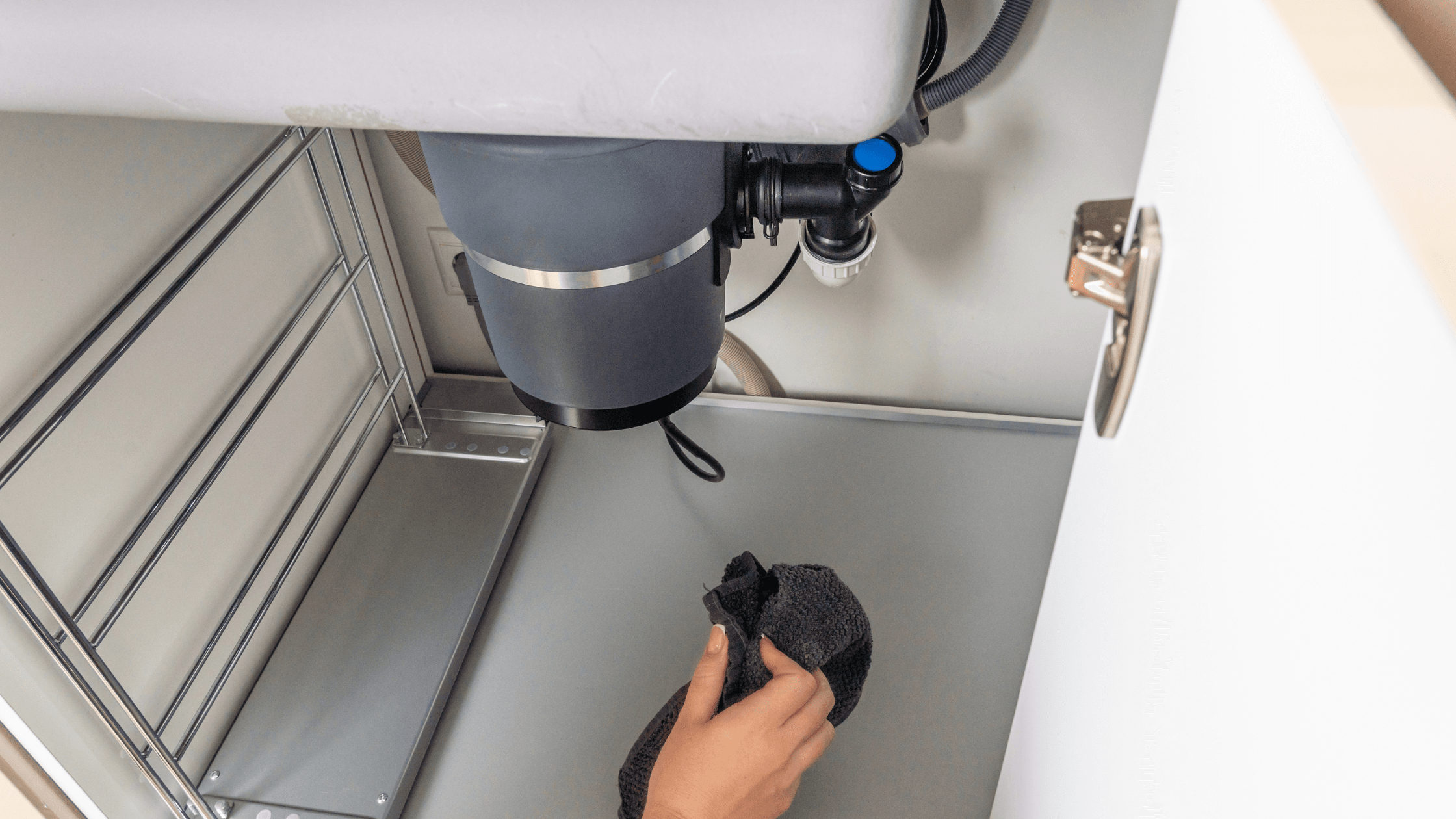Easy-to-Follow Instructions for Repairing a Leaky Waste Disposal
Easy-to-Follow Instructions for Repairing a Leaky Waste Disposal
Blog Article
The article listed below involving Why Is My Garbage Disposal Leaking From the Bottom? is highly enjoyable. Don't overlook it.

Waste disposal unit are vital cooking area devices that aid in taking care of food waste efficiently. Nonetheless, a dripping garbage disposal can be a frustrating and messy trouble to manage. Luckily, lots of leaks can be repaired quickly with a couple of easy steps. In this post, we will certainly review just how to take care of a dripping garbage disposal effectively.
Introduction
Waste disposal unit are installed under kitchen area sinks and are designed to shred food waste into smaller sized pieces, enabling it to go through the plumbing system conveniently. While these gadgets are typically dependable, leaks can take place in time because of damage, loosened links, or damages to the device.
Step-by-Step Overview to Fixing a Leaking Waste Disposal Unit
Turn Off the Power
Before trying any type of repairs, ensure that the power to the garbage disposal unit is shut off to stop the risk of electrical shock.
Find the Leakage
Determine the exact area of the leak and determine the cause
Tighten Connections
Use a wrench to tighten any type of loosened links in between the disposal unit and the plumbing system.
Replace Seals or Gaskets
If the leak results from used seals or gaskets, get rid of the old components and replace them with brand-new ones.
Patching Cracks or Openings
For splits or openings in the disposal system, use epoxy or a suitable patching material to secure the damaged area.
Identifying the Resource of the Leak
Prior to trying to repair a leaking waste disposal unit, it is vital to determine the source of the leak. This can generally be done with visual inspection or by conducting simple tests.
Visual Inspection
Inspect the waste disposal unit unit carefully for any type of indicators of water leakage. Pay attention to locations around seals, gaskets, and connection points.
Examining for Leakages
One way to check for leakages is by running water via the disposal unit and looking for any visible indications of leak.
Common Causes of Leakages in Rubbish Disposals
Worn Seals and Gaskets
Seals and gaskets play a vital duty in stopping water from leaking out of the garbage disposal. With time, these elements can deteriorate, resulting in leakages around the disposal unit.
Loose Links
The links in between the waste disposal unit and the pipes system can end up being loosened gradually, causing water to leak out throughout procedure.
Fractures or Openings in the Disposal Device
Physical damage to the garbage disposal, such as fractures or holes in the real estate, can additionally cause leaks.
Devices and Products Needed for Repairing a Leaking Garbage Disposal
Before beginning the repair work process, gather the required devices and products, consisting of a screwdriver, adjustable wrench, plumbing professional's putty, substitute seals or gaskets, and epoxy or patching material for repairing splits or openings.
Examining the Garbage Disposal After Repair Work
Once the repair work is full, examine the waste disposal unit by running water via it to make certain that the leak has been solved.
Preventive Maintenance Tips to Stay Clear Of Future Leaks
To stop future leaks, it is necessary to do normal upkeep on your waste disposal unit. This includes maintaining it clean, preventing putting non-food items or difficult objects down the disposal, and regularly looking for leakages or various other concerns.
Conclusion
To conclude, repairing a dripping garbage disposal is a fairly simple process that can be finished with basic tools and products. By following the steps outlined in this write-up and practicing preventive maintenance, you can maintain your garbage disposal in good working problem and avoid costly fixings in the future.
What to Do About a Leaking Garbage Disposal
A leaking garbage disposal often goes unnoticed until you confront a sopping cabinet, a foul-smelling puddle, or an audible drip-drip-drip from the unit. The fix can be frustrating, too, because the leak can stem from a number of components in the system. Fortunately, with a little sleuthing, you can zero in on the leak and—depending on the exact location—stop the icky oozing and repair the component that caused it. Worst case scenario, if it turns out that the garbage disposal must be replaced, installing a new one is a reasonable do-it-yourself task for those with basic plumbing skills. Read on to keep the cash you’d otherwise hand over to a pro.
Prepare to find the leak
Prior to testing the garbage disposal for leaks, unplug it at the wall outlet and turn off the power from the breaker box to prevent electrical shock. Then insert a watertight sink stopper into your sink drain and wipe the unit dry with a clean cloth. In any handy container, mix a few drops of food coloring into a few cups of water, and pour the dyed water onto the sink stopper to help you locate the leak.
Investigate the source
the top, where the disposal meets the sink drain the side, where the dishwasher hose or main drain pipe connects to the disposal or the bottom of the unit Inspect each of these locations while gliding a light-colored rag over the unit; the dyed water will readily show on the rag and reveal the location of the leak. If a leak isn’t immediately apparent, remove the sink stopper and pour a few more cups of dyed water down the sink drain, then check for leaks again. Leaks near the top of the unit are more likely to show themselves while the sink is plugged, while side and bottom leaks are more noticeable while the sink is unplugged.
The metal sink flange that sits directly inside the sink drain is typically sealed around the top with plumber’s putty (a clay-like sealant) and then secured from under the sink with bolts. If the plumber’s putty deteriorates, or the bolts loosen, the flange can no longer form a watertight seal between the sink drain and the disposal—which could cause a leak at the top of the unit.
To reseal the leaky flange, you must first detach the garbage disposal. Start by loosening the screws securing the main drain pipe to the disposal, then loosen the screws in the metal clamp securing the dishwasher hose to the disposal and detach the drain pipe and dishwasher hose from the disposal. Loosen the screws in the mounting ring that connects the disposal to the metal mounting assembly beneath the sink, then pull down the disposal and carefully set it on a clean, dry surface. Loosen the bolts in the mounting assembly with a wrench, then pull down the mounting assembly and set it near the disposal.

I stumbled upon that piece on How to fix a pretty consistent leak from my garbage disposal when doing a search on the search engines. Those who enjoyed reading our blog posting plz don't forget to share it. We recognize the value of reading our article about Why Is My Garbage Disposal Leaking From the Bottom?.
Book Service Now Report this page